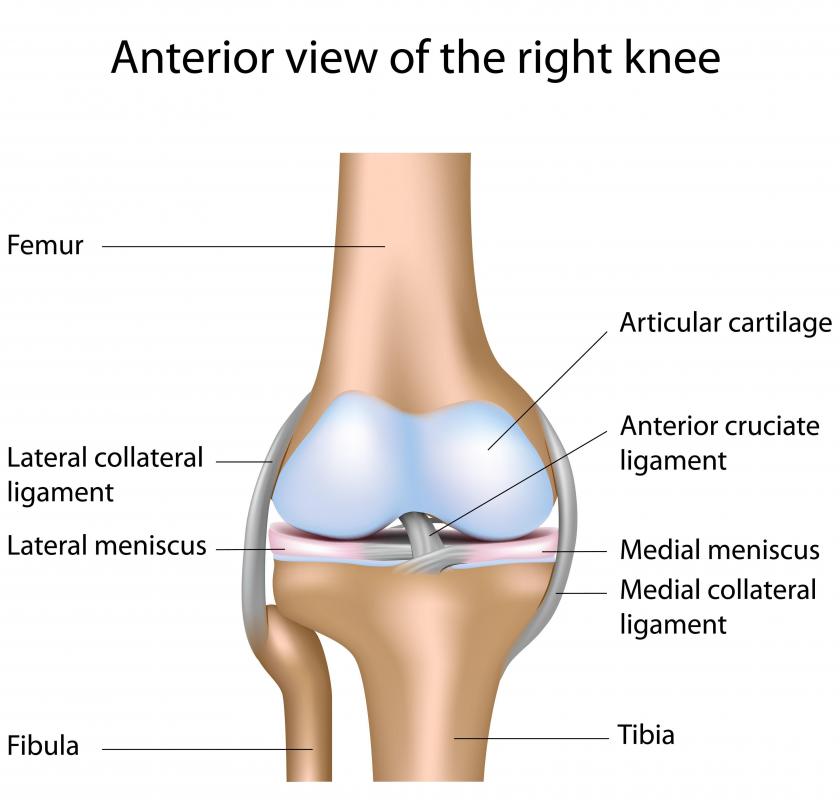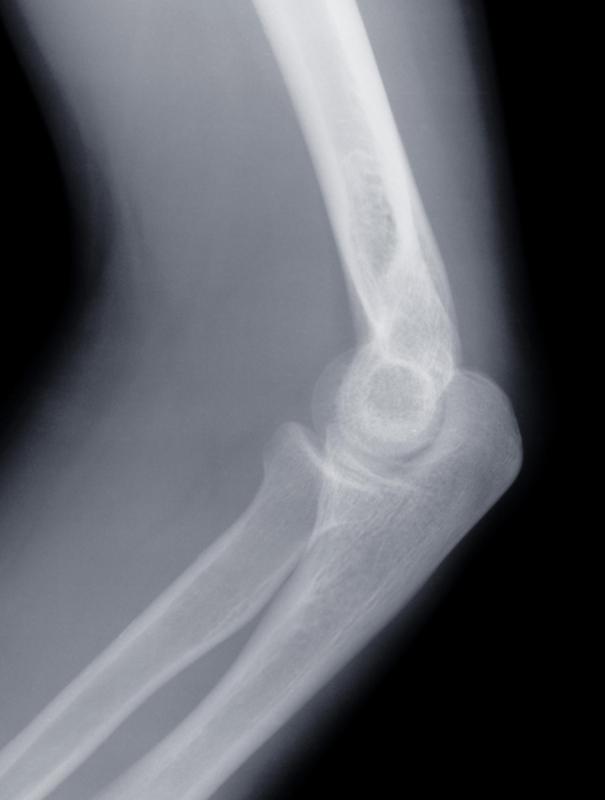At WiseGEEK, we're committed to delivering accurate, trustworthy information. Our expert-authored content is rigorously fact-checked and sourced from credible authorities. Discover how we uphold the highest standards in providing you with reliable knowledge.
What is the Best Method of Knee Injury Diagnosis?
The best method of knee injury diagnosis is an magnetic resonance imaging test (MRI). This diagnostic test is frequently used to determine the cause of knee pain and is often recommended by physicians to evaluate knee injuries. In addition to MRI screening, laparoscopic surgery is sometimes used to make a diagnosis. Sometimes, doctors can also use x-rays, ultrasounds, fluid tests, physical examinations, and blood tests to determine the cause or extent of a knee injury.
Laproscopic surgery is an invasive exploratory procedure that uses a scope and light to directly visualize the inside of the knee. This procedure can both diagnose knee pain and treat the condition that is causing the pain.

A knee injury diagnosis can also be made with a traditional x-ray. Although x-rays are most reliable when determining abnormalities of the bone, they also can help make a diagnosis based on images of abnormal structures. Another method of knee injury diagnosis is the collection of fluid around the knee. Sometimes, the case of an infection or other inflammatory condition, the knee will swell because of fluid accumulation. When the fluid is extracted and examined, the cause of the knee pain can sometimes be determined.

Sometimes, a knee injury diagnosis can be made by a physical examination. The physician can visually examine and palpate the knee to determine the cause of pain or deformity. Frequently, arthritis can be determined simply by a physical examination and by the oral history of the patient. When the patient tells the physician that he is experiencing pain and stiffness in his knee, along with swelling and redness, the physician can sometimes make a diagnosis of arthritis, based on the information provided by the patient.

Occasionally, a blood test can be helpful in a knee injury diagnosis. Certain medical conditions such as gout can elevate uric acid levels in the blood. Although gout typically affects the first toe, it can affect any joint in the body, including the knee. In addition, a blood test called an sedimentation rate can be used to determine if the body is undergoing an inflammatory process. This finding, coupled with symptoms of knee pain can indicate conditions such as arthritis, gout, and infection in the knee joint.

In certain situations, an ultrasound can help the doctor make a knee injury diagnosis. Ultrasound uses sound waves to capture images of the organs and other bodily structures. Repeated use of ultrasound to diagnose knee pain and injury is considered safe because ionizing radiation is not used. The over-use of traditional x-rays and CAT scans can pose a radiation risk to the patient, and therefore their use should be limited to when absolutely necessary.
AS FEATURED ON:
AS FEATURED ON:
















Discuss this Article
Post your comments